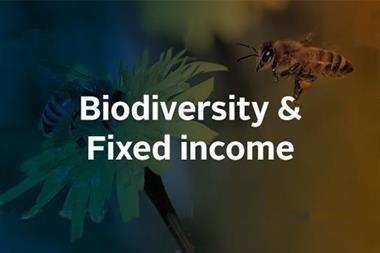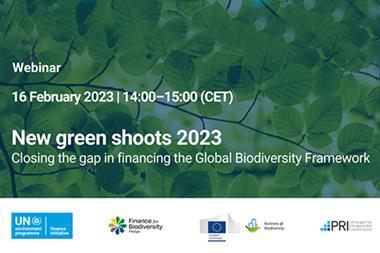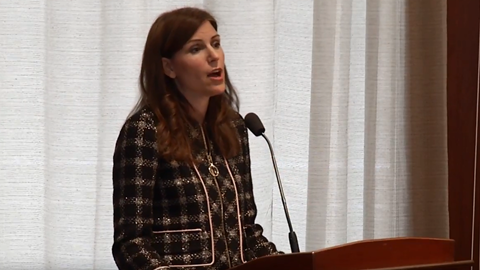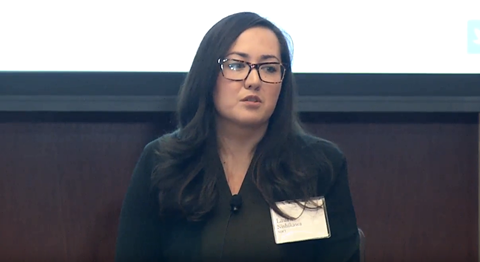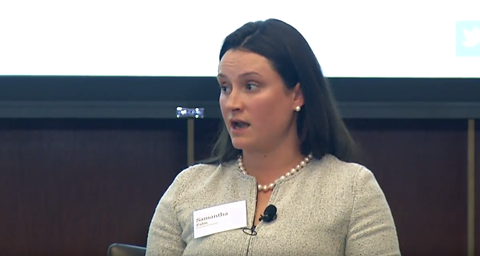The day included a welcome by Kristi Mitchem, Chief Executive Officer and Head of Wells Fargo Asset Management; five panels featuring 23 panellists; and a keynote from Arunma Oteh, Vice President and Treasurer, World Bank.
Managing risk, seizing opportunities
There was a strong focus on using the six Principles for Responsible Investment to manage credit risk, unlock value and drive positive impact alongside financial returns. Panellists discussed key drivers for incorporating ESG issues in fixed income, including the fact that millennials, the future generation of beneficiaries, are more concerned about ESG issues than previous generations. While some panellists cited ESG considerations as driven by client values, the majority saw it as a tool to manage risk and identify opportunities as part of their fiduciary duty.
Bruce Clark, Senior Vice President at Moody’s Investors Service explained how ESG considerations align with fundamental analysis. For the auto sector, for example, the low-carbon transition – with increasing emissions-reducing regulatory targets and growth in alternative fuel vehicles – presents a material credit risk. But for car manufacturers to effectively navigate and manage this risk they need a strong balance sheet and high liquidity to enable them to change course – for example by increasing R&D and capital spending into an alternative fuel vehicle business. As a result, a successful transition is only possible for companies whose fundamentals are in order.
Overcoming the challenges
Three of the key concerns across panels was a lack of standardisation of what incorporating ESG means, different time horizons for different market participants and a low quality of data. According to Laura Nishikawa, Head of ESG Research & Development, MSCI, “When you scratch the surface and you realise, one [investor] is screening out contraceptives, one is screening out tobacco, one has ten green bonds, one is integrating ESG issues into the underlying research process. Those are very different types of strategies, very different products and they all fall under the rubric of ESG…let’s get more precise about what are the strategies that we mean when we do ESG”.
Samantha Palm, Portfolio Manager at Parnassus Investments highlighted the issue of different time horizons for different market actors when she explained how her fund holds bonds for three to four years, meaning that to ensure a good exit they need to analyse any investment on a seven to eight-year term as opposed to a traditional two to five-year term.
“[The way] ESG, in our case, really ties back into that fundamental analysis… [is to not just look] at what the next three or six months might look like for a security, but really try to understand fundamentally, is this company going to be a top performer over the next five to seven years?”.
Project financers are also concerned with even longer-term risks as they invest in the entire lifetime of a project.
Imperfect data, better value
On the data side, the quality and quantity still does not live up to what investors demand – although it is much better than a few years ago. However, imperfect data might also create opportunities for the diligent investor. Peter Beer, Economist and Vice President, Payden & Rygel suggested that the unique thing about small issuers of fixed income is that ESG risks can make a big difference to actual performance. For smaller issuers and private loans, investors can engage and request specific data, and although that data might not be comparable to other issuers, it can be very valuable from a risk mitigation standpoint. This provides a good opportunity for bond picking, indicating that the current data inconsistencies create opportunities as well as risks.
ESG in fixed income: the road ahead
In five years’ time, ESG factors are expected to be more explicit in investment policies, filtering through the entire value chain from asset owners, to investment managers, to issuers. The conclusions of the day suggest the fixed income market will move to a place where the question is no longer whether ESG issues are being incorporated, but how investors should compare data and assess metrics and reporting. The market will start unpacking how ESG incorporation adds financial value from a risk mitigation standpoint, not only in liquid markets, but also in other segments of fixed income assets. Products are expected to become more consistent and mature especially in higher yielding areas and emerging market debt.
Trends suggest the fixed income market will move to a place where the question is no longer whether ESG issues are being incorporated, but how investors should compare data and assess metrics and reporting
According to Steve Sterman, Senior Managing Director, Head of Fixed Income, University of California, all of this will be underpinned by “much fuller credit rating agency involvement and guidance”, which will change people’s behaviour and shape investment decisions. When investors start choosing companies, which are better at managing ESG risks, spread differentiation will follow.
Fixed income is both affected by, and able to drive, sustainable development across the world. In the words of World Bank Treasurer Oteh, “while the focus on sustainability can help us tackle income inequality, address negative issues associated with populist tendencies and climate risk, it also presents vast investment opportunities, it will drive innovation and create jobs”.
View all the panel recordings from the day.
You can find out more about the PRI’s fixed income programme and latest publications at https://www.unpri.org/FI. For enquiries, contact the PRI’s fixed income team.



